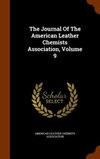Efficient Removal of Ammonia-Nitrogen from Deliming Effluent by using Magnesium Ammonium Phosphate Precipitation Method
IF 0.5
4区 工程技术
Q4 CHEMISTRY, APPLIED
Journal of The American Leather Chemists Association
Pub Date : 2022-04-01
DOI:10.34314/jalca.v117i3.4891
引用次数: 2
Abstract
Ammonia nitrogen (NH 3 -N) pollutant has received much attention in the leather industry. An efficient strategy for removal of NH 3 -N from tannery wastewater was proposed by using a magnesium ammonium phosphate (MAP) precipitation method to remove NH 3 -N from deliming effluent with the highest NH 3 -N concentration among all leather-making effluents. Results showed that approximately 80% of NH 3 -N was removed from deliming effluent when reacting at P/Mg/N mole ratio of 1.2:1.2:1.0 and pH 9.5 for 20 min. The NH 3 -N and total nitrogen concentrations of tannery wastewater (a composite wastewater of all leather-making effluents) sharply decreased by treating deliming effluent with MAP precipitation, which greatly improved the biological treatment efficiency of tannery wastewater. The residual concentration of NH 3 -N in the treated tannery wastewater was less than 2 mg/L. The total phosphorus concentration of tannery wastewater increased by less than 0.4 mg/L, indicating that secondary pollution of phosphorus did not occur after MAP precipitation treatment.磷酸铵镁沉淀法高效去除污水中的氨氮
氨氮(nh3 -N)污染物在皮革工业中受到广泛关注。提出了一种脱除制革废水中nh3 -N的有效策略,即采用磷酸铵镁沉淀法去除制革废水中nh3 -N浓度最高的废水中的nh3 -N。结果表明,在P/Mg/N摩尔比为1.2:1.2:1.0、pH为9.5的条件下反应20 min,制革废水中nh3 -N去除率约为80%。MAP沉淀处理制革废水后,制革废水(所有制革废水的复合废水)的nh3 -N和总氮浓度急剧下降,大大提高了制革废水的生物处理效率。处理后制革废水中nh3 -N残留浓度小于2 mg/L。制革废水的总磷浓度增加幅度小于0.4 mg/L,说明MAP沉淀处理后未产生磷的二次污染。
本文章由计算机程序翻译,如有差异,请以英文原文为准。
求助全文
约1分钟内获得全文
求助全文
来源期刊

Journal of The American Leather Chemists Association
工程技术-材料科学:纺织
CiteScore
1.30
自引率
33.30%
发文量
29
审稿时长
3 months
期刊介绍:
The Journal of the American Leather Chemists Association publishes manuscripts on all aspects of leather science, engineering, technology, and economics, and will consider related subjects that address concerns of the industry. Examples: hide/skin quality or utilization, leather production methods/equipment, tanning materials/leather chemicals, new and improved leathers, collagen studies, leather by-products, impacts of changes in leather products industries, process efficiency, sustainability, regulatory, safety, environmental, tannery waste management and industry economics.
 求助内容:
求助内容: 应助结果提醒方式:
应助结果提醒方式:


